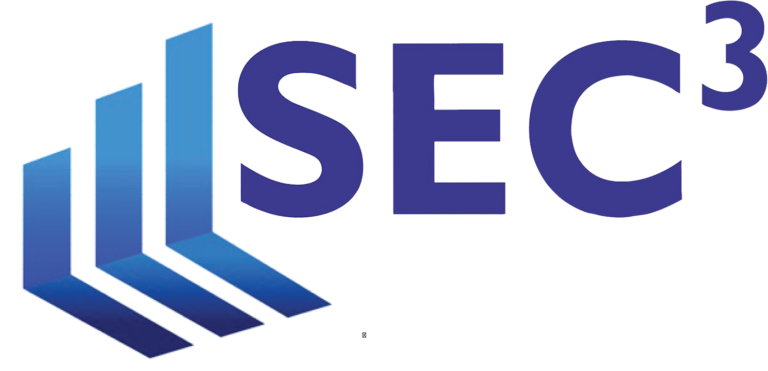Lessons from 2024: Tips for Private Fund Managers

As we look back on the SEC’s actions in 2024, we wanted to share our thoughts on lessons learned that we believe will carry through to 2025.
1. Private Fund Advisers should Expect Continued SEC Exam Scrutiny
It should not be any surprise that the SEC has, and will continue, to focus on private funds (check out our article Latest SEC Document Request Lists: What Private Fund Managers Should be Worrying About for more detail). As discussed in the Division of Examinations Examination Priorities for Fiscal Year 2025, the SEC will continue its endoscopic approach to private fund managers’ inspections, focusing on the following areas:
- Firm compliance with limited partnership agreements, advisory committee mandates, and other contractual obligations
- Processes for the accurate fee calculation and allocation of private fund fees and expenses
- Conflicts, controls and disclosures about private funds managed alongside other funds and co-investments
- Undisclosed conflicts of interest, including receipt of fees and expenses from portfolio companies and other sources
- Use of affiliated service providers
We discussed these priorities in more detail in our October and November 2024 Regulatory Roundup. The bottom line is that SEC’s Division of Examinations (EXAMS) plans to review whether private fund advisers manage assets consistent with disclosures, accurately calculate fees and make appropriate offsets, disclose conflicts and risks, and comply with recently adopted SEC rules, including amendments to Form PF and the Marketing Rule (Advisers Act Rule 206(4)-1.)
2. Develop Incident Response Programs for Cyber-Breaches
The SEC adopted extensive new requirements under Regulation S-P that will require broker-dealers, investment companies, registered investment advisers, and transfer agents to adopt incident response programs that notify customers of data breaches within 30 days. We discussed these amendments in more detail in our Regulatory Roundup for May 2024. The deadline for compliance for registered investment advisers with $1.5 billion in assets under management is December 3, 2025. Smaller firms have until June 3, 2026 to comply. Other big changes include an expanded definition of “customer information” to include information received from other financial institutions and more extensive recordkeeping requirements.
Compliance with these amendments will be a heavy lift for investment advisers. Here are some initial steps to prepare:
- Update policies and procedures to reflect the updated definition of “customer information.”
- Update or create incident response programs to reflect the new requirements under Amended Regulation S-P.
- Revise vendor due diligence policies and procedures to include oversight required under the Regulation S-P amendments.
- Review logging and auditing tools for email and file access to assess whether breaches have occurred to meet notification obligations.
- Review service provider contracts to allow for ongoing due diligence to confirm whether the service provider is taking appropriate measures to protect customer information and provide notification in the event of a breach.
- Update record-keeping policies and procedures to conform to amendment Regulation S-P requirements.
3. Update Form PF Policies and Procedures to Meet Additional Reporting Requirements
The SEC adopted additional reporting requirements on Form PF, which will affect filings made in 2025. According to the SEC’s Fact Sheet, the most recent amendments will:
- Require enhanced reporting by large hedge fund advisers about their qualifying hedge funds, including investment exposures, counterparty exposures, turnover, and liquidity, among other things;
- Require enhanced reporting by hedge funds to provide greater details about the funds’ operations, counterparty exposures and investment strategies;
- Change how advisers report complex fund structures (including master-feeder arrangements); and
- Remove aggregate reporting for large hedge fund advisers.
One significant challenge is that Form PF filers will no longer be able to report certain fund structures on an aggregate basis. This means that each component fund for feeder funds, parallel funds and fund-of-funds will need to be reported. Moreover, when determining whether an adviser is required to file Form PF, funds that invest in other funds must include the value of the investments in those other funds. Additionally, certain separate legal entities that hold assets, incur leverage, or conduct trading or other activities as part of the private fund’s investment activities but do not operate a business (“trading vehicles”) must be identified and reported on an aggregated basis.
The amendments will also require advisers to provide additional information about themselves and their private funds, including assets under management, withdrawal and redemption rights, gross and net asset value, inflows and outflows, base currency, borrowings and types of creditors, fair value hierarchy, beneficial ownership, and fund performance.
The compliance deadline for these amendments is March 12, 2025. As noted in the Amended Form PF Frequently Asked Questions, the Division of Investment Management says that any Form PF annual updating amendments due after March 12, 2025 must be made on the amended version of the form. “For example, if your fiscal year ends on December 31, 2024, and you submit your annual update on the due date of April 30, 2025, you must use the amended version of the form.”
Firms that manage private funds should update their policies, procedures and processes for completing Form PF to ensure they can meet these new disclosure obligations. Firms should also prepare to allocate more resources to complete this more complex form.
4. Update Your Marketing Rule Compliance Process with Robust Disclosure, Better Record Retention, and Mandating Balanced Presentations
EXAMS issued a risk alert on its Initial Observations Regarding Advisers Act Marketing Rule Compliance (the “Risk Alert”), sharing examples of deficiencies, ranging from books and records violations to materially misleading advertisements. (Check out our article: SEC Tells Advisers What Not to Do in Advertisements.) EXAMS noted that many advisers updated their policies and procedures to conform to the Marketing Rule, provided training for their staff, and established a review process for advertisements. The Staff noted, however, that some advisers failed to address some of the rule’s more detailed requirements, such as the requirements for testimonials, endorsements and third-party ratings. Private fund advisers should take note of these specific issues:
a. Calculating Gross and Net IRR for Private Funds
The SEC updated its Marketing Compliance Frequently Asked Questions to clarify its expectation that private funds must present gross and net internal rates of return (IRR) consistently, and covering identical time periods. The staff states that the Marketing Rule (Advisers Act Rule 206(4)-1) “requires that any presentation of gross performance be accompanied by a presentation of net performance that has been calculated over the same time period and using the same type of return and methodology as the gross performance.”
The staff noted that certain private fund advisers have been showing their Gross IRR calculated from the time the investment is made without reflecting fund borrowing or subscription facilities. That Gross IRR is presented alongside the Net IRR calculated to reflect the impact of fund borrowing. The staff felt this practice was a violation of the Marketing Rule since it results in IRR calculations “being made across different time periods (e.g., Gross IRR Calculations beginning when funds initially use their lines of credit to acquire investments, and Net IRR calculations beginning only once all capital commitment are called and their lines of credit are retired.).” For more details, check out the FAQs here.
b. Representative Account Performance
The SEC settled a case under the Marketing Rule (Advisers Act Rule 206(4)-1) with an RIA (the “Adviser”) that managed a private fund that invested in publicly traded equities, including initial public offerings. The firm used pitch decks and fact sheets with prospective investors that included performance returns. (See a detailed summary of the case in our Regulatory Roundup for June 2024.)
The Adviser’s mistake was to present the performance of one investor’s account as if it were the fund’s returns. This particular investor invested at the fund’s inception and participated in some highly profitable IPO investments, boosting its returns. Not all investors could participate in IPOs because of investment restrictions under FINRA Rules 5130 and 5131. Consequently, this investor’s net performance of 44.8% was much better than the fund’s overall net performance of negative 5.7%.
The Adviser was fined $100,000 for violating Section 206(4) of the Advisers Act and Rules 206(4)-8 and 206(4)-1, the Marketing Rule, presumably receiving at least some credit for taking prompt action to fix the issue and cooperating with the Staff.
So, the lesson learned here is that advisers must be careful to tell the whole story when communicating with potential investors. The SEC will be looking at your marketing materials with the benefit of hindsight, so include any information investors might want when making their investment decisions.
5. Review “Off Channel” Communications Policies and Practices
The SEC settled its first stand-alone case against an investment adviser for failing to maintain records of its electronic communications. (Check out the details in our Regulatory Roundup for May 2024.) Long story short, a registered investment adviser’s (the “Adviser”) employees, supervisors, and management sent and received thousands of personal text messages using non-official communications channels discussing firm business. The Adviser’s policies and procedures were much broader than the books and record-keeping requirements under the Advisers Act, requiring retention of “all electronic communications” instead of just those that concerned “recommendations made or proposed to be made and advice given or proposed to be given about securities,” as stated in Advisers Act Rule 204-2(a)(7). The firm’s policies and procedures also permitted the firm to access employees’ personal devices to review for off-channel communications, which the firm failed to do.
The lessons from this case include:
- Read the compliance manual! Firms pay consultants and law firms thousands of dollars to develop their compliance policies and procedures. However, having policies and procedures that no one reads or follows can be just as harmful as having no compliance processes at all.
- Do not make promises you cannot, or should not, keep. In this case, the policies and procedures regarding electronic communications were broader than required under the Advisers Act. When reviewing the firm’s policies and procedures, confirm that they are consistent with the Advisers Act. SEC examiners may punish firms that promise to go above and beyond their regulatory obligations.
- The SEC’s Order clarifies that the off-channel communications had to do with investment advice, either actual or proposed. The specific provision in question – Rule 204-2(a)(7)(i) — includes a requirement to retain records on proposed This could capture many communications, including information about portfolio company performance, general thoughts about investments and many other items that might not look like investment advice.
6. Consider Whether Your MNPI Policies and Procedures are Sufficiently Robust
The SEC won its recent insider trading case against Matthew Panuwat after a jury found that he used material, non-public information about his company to trade securities of a similar company. SEC v. Panuwat, Civil Action No. 4:21-cv-06322 (N.D. Cal. Verdict April 5, 2024) (discussed in our Regulatory Roundup for May 2024). As with many insider trading cases, Panuwat earned about $100,000 from the trade, which is probably less than the legal fees paid to defend his case. In any event, Panuwat received information that his company was being acquired and, within minutes, purchased options in a similar company. The stock price of this other company increased after the acquisition announcement, and Panuwat earned $107,066 by exercising his stock options.
For investment advisers with access to inside information, this case now provides a precedent for a broader view of the materiality of non-public inside information. Firms may want to consider whether material non-public information about one company might be material to another, especially where there is a “market connection” between the companies. It is important to note, however, that the SEC’s winning argument relied on the broad insider trading policy at Panuwat’s company, which prohibited trading the securities of other publicly traded companies based on MNPI learned through his employment and a confidentiality agreement Panuwat breached by using his company’s information for personal gain.
Panuwat is expected to appeal this verdict. In the meantime, it is still not clear how to determine a “market connection” between companies for insider trading purposes. In this case, Panuwat knew that his company’s acquisition would probably affect the second company’s stock price because of his involvement in the analysis of the prospective sale. Different facts could have affected the outcome.
In any event, advisers should be aware that courts are willing to accept broader theories of liability in insider trading cases. They should consider this more expansive view of MNPI when developing restricted lists, especially with companies in smaller market sectors. Finally, advisers should consider training their employees on the regulatory risks of shadow trading.
7. Be Ready to Comply with the Corporate Transparency Act (“CTA”) and its Beneficial Ownership Information Reporting Rule (“BOI Rule”)
Although SEC-registered investment advisers are exempt from the beneficial ownership reporting requirements of the CTA, certain unregistered funds and funds managed by state-registered or unregistered advisers may be in scope. On December 3, 2024, the U.S. District Court for the Eastern District of Texas issued a nationwide preliminary injunction preventing the CTA and BOI reporting rule from being enforced. On December 23, the Fifth Circuit issued a temporary stay of the injunction, which then reinstated CTA compliance. In response, FinCEN issued an alert confirming that BOI reporting requirements were in effect and extending the reporting deadline to January 13, 2025. Then, on December 26, 2024, the Fifth Circuit issued a new order vacating the stay and reinstating the nationwide preliminary injunction. FinCEN has acknowledged the most recent court order and stated that “reporting companies are not currently required to file beneficial ownership information with FinCEN.” This means that companies required to submit BOI reports to the Financial Crimes Enforcement Network (FinCEN) can hold off for now. However, firms should continue monitoring this injunction’s status on the FinCEN website.
In the meantime, firms can review FinCEN’s current FAQs and its small entity compliance guide to better understand their obligations under the CTA.
Photo by Joëlle Ortet on Pixabay
Table of Contents

Top Compliance Program Mistakes (and How to Avoid Them) (Part 3 of a three-part series)
By addressing the common pitfalls discussed in this article, firms can strengthen their compliance infrastructure and better demonstrate their commitment to regulatory responsibility.

Top Compliance Program Mistakes (and How to Avoid Them) (Part 2 of a three-part series)
Advisers often spend significant time drafting compliance manuals, but are these policies truly effective in daily operations and risk mitigation?

Top Compliance Program Mistakes (and How to Avoid Them) (Part 1 of a three-part series)
In this first post of our three-part series on common compliance program mistakes, we explore why many firms fall into the trap of the “neglected compliance manual” and how to transform it into a relevant, firm-specific, and engaging resource.

A New Era for Co-Investments?
The SEC just proposed major updates that could make life easier for BDCs, closed-end funds, and their advisers when it comes to co-investing.

Regulatory Roundup for February and March 2025
Stay informed with our February–March 2025 Regulatory Roundup, featuring practical insights on key SEC developments, including updates to the Marketing Rule, crypto regulation, and Rule 506(c) under Regulation D.

7 Ugly Truths About Compliance: a Primer for New Chief Compliance Officers
Being a Chief Compliance Officer is an important job but before you accept the offer, there a few things you should know. Enjoy!

For over two decades, we have been providing compliance consulting services and servicing as outsourced Chief Compliance Officers. Our professionals have served as SEC regulators and in senior leadership, guiding the industry’s principal compliance association. Our consultants also have hands-on industry experience as chief compliance officers, experienced securities attorneys and senior management of investment advisers, broker-dealers and fund administrators.
What can SEC3 do for you?
SEC3 offers an extensive suite of customizable compliance services for investment advisers, private fund advisers, CPOs, CTAs, investment companies, institutional investors and broker-dealers which can complement your internal compliance program on a one-time or recurring basis depending on your needs.
Call us today at (212) 706-4029 x 229, or shoot us an email at info@SEC3compliance.com so we can set up a time for one of our consultants to discuss your needs and how we can help.

